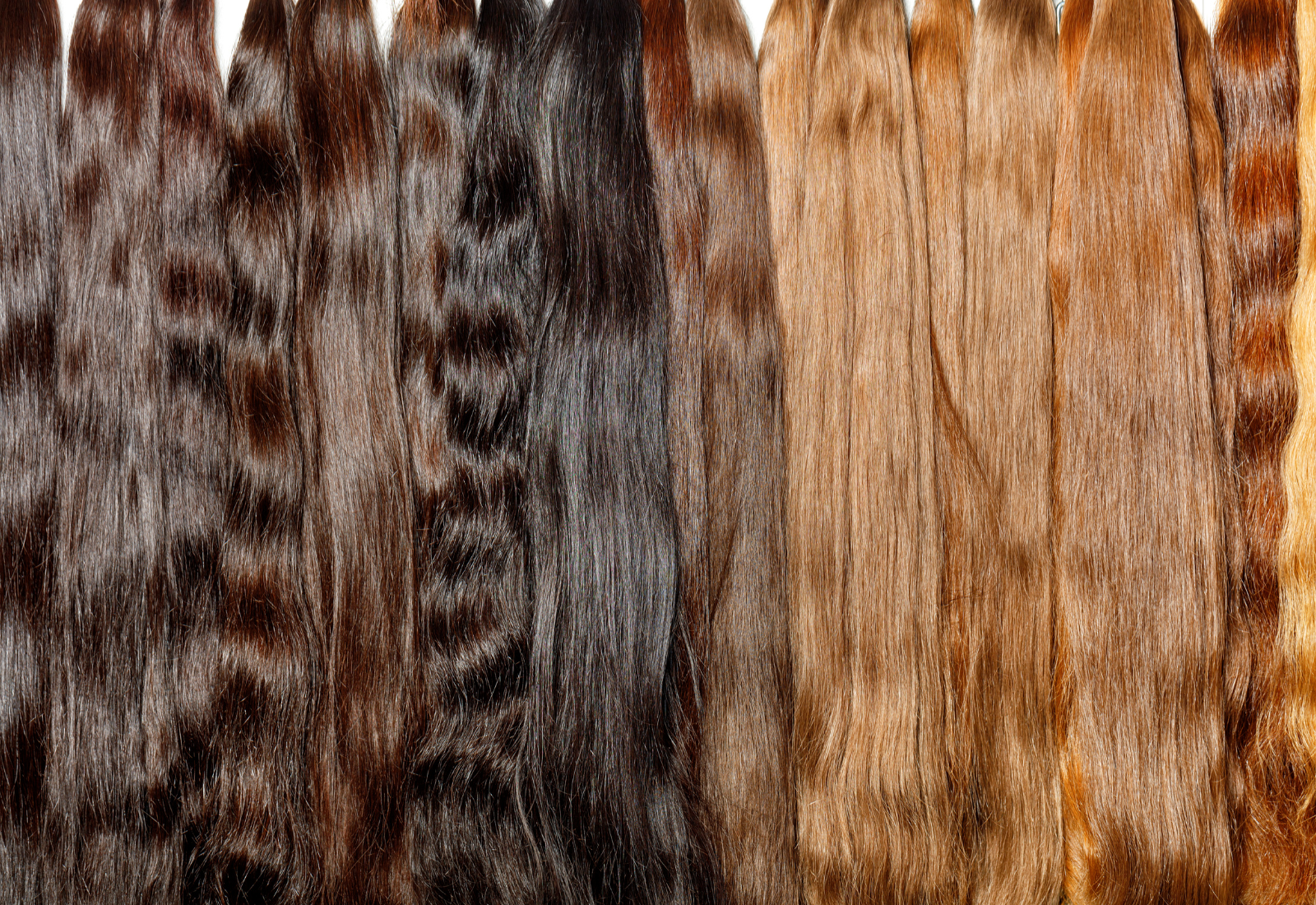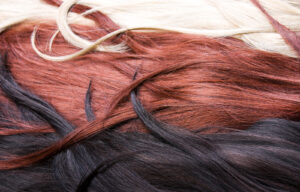When it comes to enhancing your hair’s length and volume, hair extensions can be a game-changer. Whether you have short hair and want to add length, or you’re looking to create more volume and thickness, hair extensions offer versatility and style options. However, achieving a seamless blend between your natural hair and extensions can be a bit tricky. In this guide, we’ll walk you through the steps and tips for blending hair extensions with your natural hair flawlessly.
The Rising Popularity of Hair Extensions
Hair loss affects countless people, regardless of age or gender. Accordingly, more and more men and women are turning to hair extensions to achieve their ideal hair look. According to DataHorizzon Research, the wigs and extension market size was valued at USD 7.7 Billion in 2022 and is expected to reach a market size of USD 15.7 Billion by 2032 at a CAGR of 7.5%. This surge in demand highlights the significance of hair extensions in the world of beauty and self-expression. As individuals explore extensions as a solution to various hair concerns, it becomes increasingly essential to understand how to seamlessly blend them with natural hair, ensuring a flawless and natural appearance.
Understanding Your Hair Extensions
Before diving into the blending process, it’s crucial to understand the types of hair extensions available and choose the one that suits your needs best. Here are some common types:
- Clip-In Hair Extensions: Clip-in extensions are popular for their ease of use. They come in wefts with clips attached, allowing you to clip them into your hair at different levels for added length and volume.
- Tape-In Hair Extensions: Tape-in extensions are semi-permanent and are placed between sections of your natural hair. They lie flat against your scalp, making them discreet and comfortable.
- Sew-In Hair Extensions: These extensions are braided into your natural hair and can last for several weeks. They provide a natural look but require professional installation.
Preparing Your Natural Hair
Clean and Dry Your Hair
Before applying extensions, ensure that your natural hair is clean and completely dry. Use a sulfate-free shampoo and conditioner to maintain the health of both your natural hair and extensions.
Determine Your Hair Type
Understanding your hair type is crucial in selecting the right hair extensions. When choosing extensions that match your natural hair, consider the following factors:
- Texture: Determine whether your natural hair is straight, wavy, curly, or kinky. Extensions should ideally match your hair’s natural texture to blend seamlessly.
- Color: Take into account your hair color, including any highlights or lowlights. Match the extensions’ color as closely as possible to your natural shade for a harmonious blend.
- Length: Consider the length of your natural hair. Extensions should be selected based on whether you want to add length, volume, or both. Ensure the extensions are a suitable length to achieve your desired look without appearing mismatched.
Trim Your Natural Hair
Trimming your natural hair is an often-overlooked but essential step in the blending process. Over time, split ends and uneven lengths can make the transition between your natural hair and extensions more noticeable. By having a professional hairstylist trim your natural hair before adding extensions, you ensure that the ends are even and healthy. This not only creates a polished and well-blended appearance but also promotes the overall health and vitality of your hair.
Blending Hair Extensions
Choose the Right Extensions Color
Selecting the perfect color match is vital for a seamless blend. If your hair has highlights or lowlights, opt for extensions with similar shades to mimic the natural variations in your hair. A hair replacement service should be able to help you with this.
Layer and Style
Layering your hair extensions is an effective way to achieve a natural look. After attaching the extensions, ask your hairstylist to trim and layer them strategically. This process involves blending the extensions with your natural hair by creating different lengths and dimensions. By doing so, you ensure that the extensions seamlessly integrate with your hair, making it difficult to distinguish between the two. Your hair extension stylist’s expertise in layering is key to achieving a flawless finish that enhances your overall appearance.
Use Heat Styling Tools
Curling or straightening your hair after attaching extensions can help blend them effortlessly. Ensure you use heat protectant products to prevent damage to both your natural hair and the extensions.
Create Loose Waves
Creating loose waves or curls in your hair can help blend the extensions better. These waves add texture and volume, making it harder to distinguish between your natural hair and the extensions.
Maintaining the Blend
Regular Maintenance
To keep your blend looking flawless, it’s essential to maintain your extensions. Consider the following:
- Scheduled Touch-Ups: Follow the recommended schedule for touch-ups and adjustments provided by your hair extension service or stylist. This typically involves repositioning, tightening, or replacing extensions as needed to maintain a seamless blend.
- Trimming and Styling: Visit your hair extension stylist regularly to trim both your natural hair and extensions as they grow. This ensures that the lengths remain consistent and that the layers and style continue to blend effortlessly.
- Conditioning Treatments: Consider periodic conditioning treatments to keep both your natural hair and extensions in optimal condition.
- Professional Guidance: Consult with your hair extension specialist for personalized advice on caring for your specific type of extensions.
- Gentle Handling: Be gentle when detangling, washing, and styling your hair, as excessive force or harsh treatment can lead to damage or premature wear of the extensions.
Proper Care
Use sulfate-free shampoos and conditioners designed for extensions. Detangle your hair gently, starting from the tips and working your way up to the roots.
Protect Your Hair at Night
To maintain the seamless blend between your natural hair and extensions, it’s crucial to take precautions while you sleep. Consider the following steps:
- Silk or Satin Pillowcase: Invest in a silk or satin pillowcase. These smooth materials reduce friction between your hair and the pillow, preventing unnecessary tangling and friction that can lead to damage or displacement of your extensions.
- Loose Braid or Ponytail: Before bedtime, secure your hair in a loose braid or ponytail. This helps minimize movement and prevents your hair and extensions from rubbing against the pillow, reducing the risk of tangling or loosening.
- Avoid Tight Hairstyles: Refrain from tying your hair into tight hairstyles or using hair accessories with metal clasps, as these can create tension and potentially damage both your natural hair and extensions.
- Use a Hair Wrap or Bonnet: Consider using a silk or satin hair wrap or bonnet. These accessories provide additional protection by keeping your hair contained and reducing friction with the pillow.
In Conclusion
Achieving a seamless blend between your natural hair and extensions is all about proper preparation, choosing the right type and color of extensions, and regular maintenance. By following the tips and steps outlined in this guide, you can enjoy stunning, natural-looking hair that turns heads wherever you go.
Contact Eldorado for Baltimore Hair Extension Services
If you have any questions or need further assistance with blending hair extensions or any other hair-related concerns, please feel free to reach out to our team. We’re here to help you achieve the perfect look and maintain the health of your hair. Contact us to learn more, or schedule a free hair analysis now.





